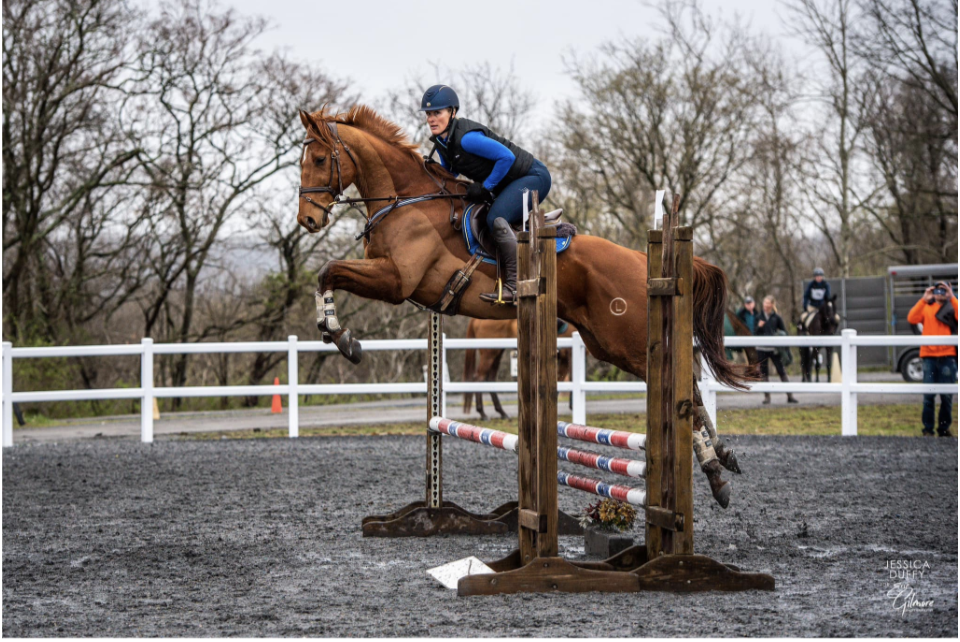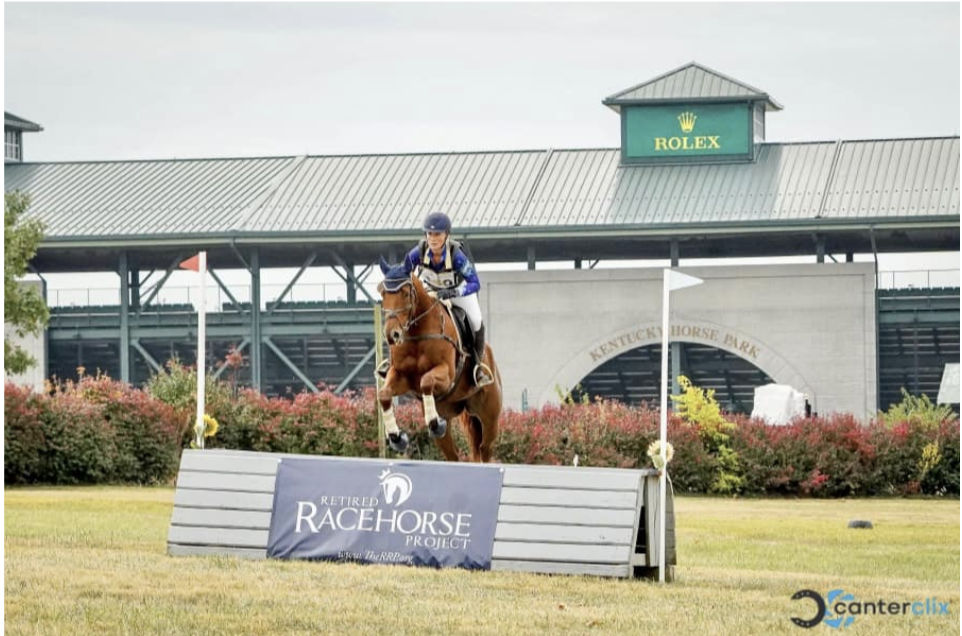
TRRAC- An Aftercare Ally
I have worked with Nina Lyman of TRRAC during a few retirements. Most recently, Its Over went to TRRAC to be rehabbed and restarted for his post-racing career. I spoke with Nina to learn more about TRRAC.
Where is TRRAC based?
TRRAC is based in beautiful Chester County, Pennsylvania.
How did your program begin?
TRRAC became an official non-profit organization in 2017. However, TRRAC’s idea sparked
when a horse arrived to its homebase at the time for rehabilitation of a bowed tendon. The
horse would not be able to return to racing, and the owners at the time were unable to provide
financial support for the horse. Nina Lyman (Bradley) approached the owner with a solution to
take the horse on herself, rehabilitate the horse, and find him a safe and secure home. Shortly
after a successful healing period the horse was locally placed, other trainers expressed their
need for the safe retirement of horses via a secure outlet.
Prior to TRRAC’s formation as a non-profit in 2017, TRRAC joined Turning For Home with neighboring track Parx (known as Philadelphia Park at the time) and accepted 15 horses in its first year. TRRAC has now expanded as a full non-profit organization with an average of 40 horses, ten of those horses being permanent sanctuary residents (including two retired breeding stallions) and expands to several different partner organizations with different race tracks. The organization is also fully accredited with the Thoroughbred Aftercare Alliance.
What makes TRRAC unique?
TRRAC takes pride in ensuring every horse placed is tracked and safe for their lifetime.
TRRAC’s protocols include various ways of identifying each horse including microchips and a
freezebrand on every horse. Each horse is tracked through meticulous paperwork and at any
time a horse cannot be cared for, it may return to the organization as a safety net. TRRAC
establishes and maintains excellent relationships and rapport with the owners and trainers it
works with. TRRAC is an honest program that is backed with 5-star reviews from adopters all
over America who are matched evenly with a horse to suit their needs as well as TRRAC’s
available resources.
What happens when a horse is accepted into your program?
Accepted horses in our program start with various protocols before they enter our facilities. The
first protocol starts with an owner signing paperwork to turn the horse into the program. The
intake form allows us to screen each horse as to their need for rehabilitation, if that is
the case. Each horse must be up to date on vaccinations and coggins and be accompanied by a
health certificate no less than 72 hours old. Once the horse arrives to our facilities, our three
protocols are implemented:
- Health and soundness – A veterinarian will conduct a physical examination and jog every
horse in the event the horse may need further diagnostic work. - Mentality and suitability – A horse is given at least 30 days of downtime and assessed
for its handle-ability. This means, the organization will figure out what type of adopter or
owner would be required for the horse. Our horses range from amateur and family
friendly, to professional training types. - Riding – Each horse is evaluated under saddle for suitability for an adopter. Any “quirks”
are noted, and quiet horses who ride “on the buckle” are offered for amateur and family
type situations.
After all protocols are met, the horse is brought up to date on what they need, and is fully
rehabilitated (if required), they are cleared for adoption. The organization will take professional
photos and video and create an adoption profile to be listed on our website for potential adopters.
Do you work with other locations or farms in your program?
TRRAC currently has two locations:
- The Farm At Peaceful Meadows hosts our horses in training and adoptions.
- The Farm at Worth’s Tavern hosts our sanctuary resident horses.
Do you require new owners to do reporting?
Yes, all new owners and adopters are required to provide the following follow up after adoption:
- 14 days (just to see how the horse is settling)
- Every 30 days for the first 6 months to ensure the horse is adapting to its new home.
TRRAC offers free, professional advice for training, handling, nutrition, etc. Should an adopter or
owner be local, TRRAC will send a professional trainer or representative for a free consult.
How many horses have gone through your program?
TRRAC has assisted over 500 horses.
How does TRRAC receive funding?
TRRAC receives grant funding through various accredidations, as well as financial support from
its partnered racetracks when receiving horses from those tracks. Owners are required to
submit a one time fee to accompany their horse to assist in their retiring transition. TRRAC also
accepts donations from the public who support our work in our program.

Do you have a story about a horse that we can share with our readers?
We have a great story to share about two brothers who were adopted to the same adopter! One
has even traveled and competed in the Retired Racehorse Project’s Thoroughbred Makeover.
Via Hannah Schofield – Milestone Sport Horses:
Sometimes the universe has plans for us, and I truly believe that was the case for Merry and I. I
first saw his picture on TRRAC’s website when I was horse shopping in the fall of 2021. He and
his half brother Ventriloquism were listed the same day and I drove up to PA 24 hours later to
meet Venti, and it was love at first sight. My plan was for him to be a resale but that idea went
out the window before I’d even pulled out of Maui Meadow Farm. Nina had mentioned meeting
his half brother too, but I declined, saying, I don’t have room for two, so please don’t tempt me.
Merry was adopted out shortly thereafter and that was that. Or so I thought. It turned out that
wasn’t a great fit and he was returned to TRRAC. I remember seeing him posted again and I felt
bad for him. Knowing how awesome his brother was I kept sharing TRRAC’s posts trying to
network him into a home. One of these resulted in a ridiculous online debate about how he
carried his head so high and his conformation not being ideal and I rushed to defend the horse I
still hadn’t met, as did many of my friends. I was getting pokes of encouragement to adopt him
and when Nina contacted me herself to suggest that I do, I decided it was just meant to be. He
didn’t look like much when he came. He has very high withers and had a very weak topline after
a year of downtime. He had bumps on his nose and quickly managed to add to those here
giving him a profile only a mother could love. He has a big personality and while it was obvious
from the get-go he was very talented, I had to show him a whole new way of carrying himself,
and he wasn’t entirely sure that was a game he wanted to play. He could jump the moon but he
wanted to do that his way too. But he always had a gratitude about him. It’s like he knew I took a
chance on him, and he decided he might do the same for me. After jumping out of, bolting
across and doing airs above grounds in several dressage rings running up to it, Merry and I
placed 10th in Dressage at RRP 2023. He had a lovely test ride where the judge commended
him on his relaxation and apparent love of his new job. At his last show a 5* eventer tried to buy
him from me, saying he was the real deal. He now has a fan club of seriously successful people
as long as his forelock. Not every gamble pays off, but taking a chance on a horse that might
not look like much is one I will take every time. He’s the most talented horse I’ve ever owned
and his future is so bright.
It should be noted that Milestone Sport Horses also has adopted Global Nation and Super
Coach Fred, also race trained by Pewter Stable (Kate Demasi) with the intention of Super
Coach Fred heading to the 2024 Thoroughbred Makeover!
If people want to help your program, what can they do?
There are several ways people can help our program:
- Adoption partnerships (inquire for more details)
- TRRAC’s foster program, which allows experienced horse owners or handlers to work with one specific horse in the program until they are adopted.
- Volunteering – Facility volunteerism, social media/website, riding, etc.
- Donations – Physical items are always needed, we have an Amazon list! Monetary donations go towards our veterinarian, feed and farrier invoices.
- Sharing our social media – Sharing posts of available horses, events or fundraisers help our reach!
Contact our office for more information on how you can be involved.
I am grateful to Nina for taking the time to share all of this information and the story of Venti and Merry. Be sure to go to their website and follow TRRAC on social media.
